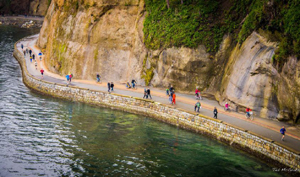Saturday May 23, 2020 ~ VICTORIA, BC [Updated 7:30 pm May 23]
Analysis by Mary Brooke, B.Sc. ~ West Shore Voice News
As restrictions on personal interaction and economic activity ease up a bit in BC, we are hearing at least two conflicting messages that serve to keep most of us during the Phase 2 of Restart BC in a sober mood: we have flattened the curve but a second wave is coming.
And somewhere down the middle, today May 23 Provincial Health Officer Dr Bonnie Henry said “the risk is everywhere, so we all need to take the actions for prevention of transmission of the virus”. Outbreaks are a reminder of that, says Dr Henry such as today announcing another food processing plant outbreak with five active cases of COVID-19 (which indicates community spread).
We hear that wearing a mask is socially respectful to others but that we can get sick ourselves if we take them off improperly. We are allowed out of our homes again — think about that, how quickly we’ve complied with self-isolation — but do we want unnecessary exposure to the virus?
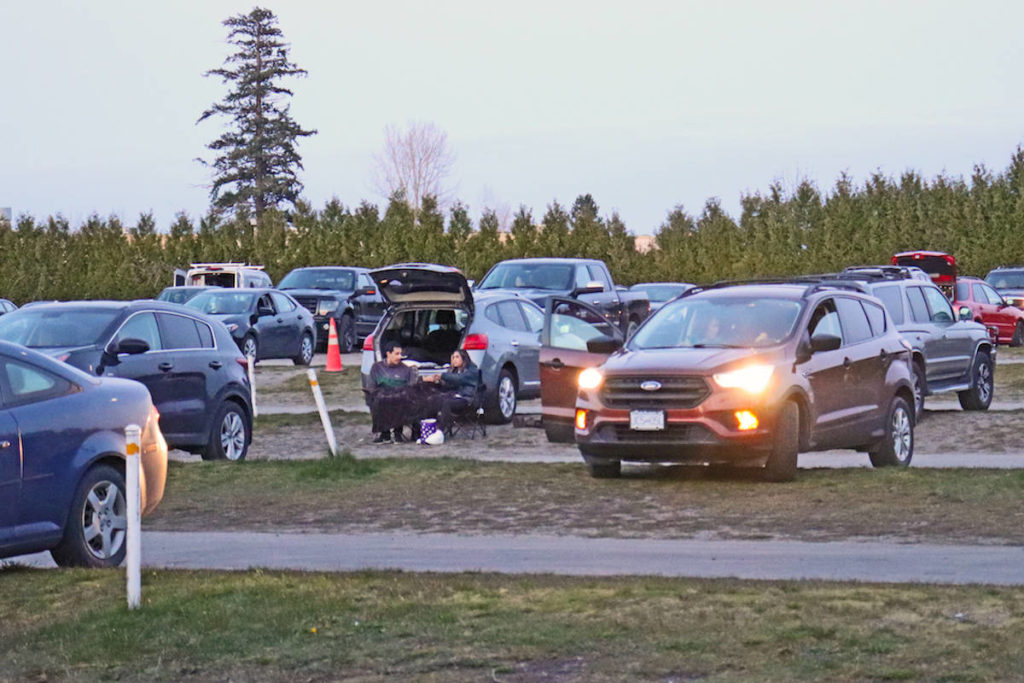
We can go to an event or restaurant drive-through or to a workspace in our cars so as to achieve physical distancing, foregoing for now the back-to-greenhouse gas aspects of those choices. Though even that now has restrictions, as ordered by Dr Henry yesterday — no more than 50 vehicles for outdoor drive-in events, with a restriction on the sale of refreshments, and anyone attending these events must stay in their cars unless they have to go to washrooms, which must be serviced with running water for proper hand hygiene. We can note that these choices are only possible for those who are not financially or situationally challenged.
Let’s not become numb to the numbers (as of May 23):
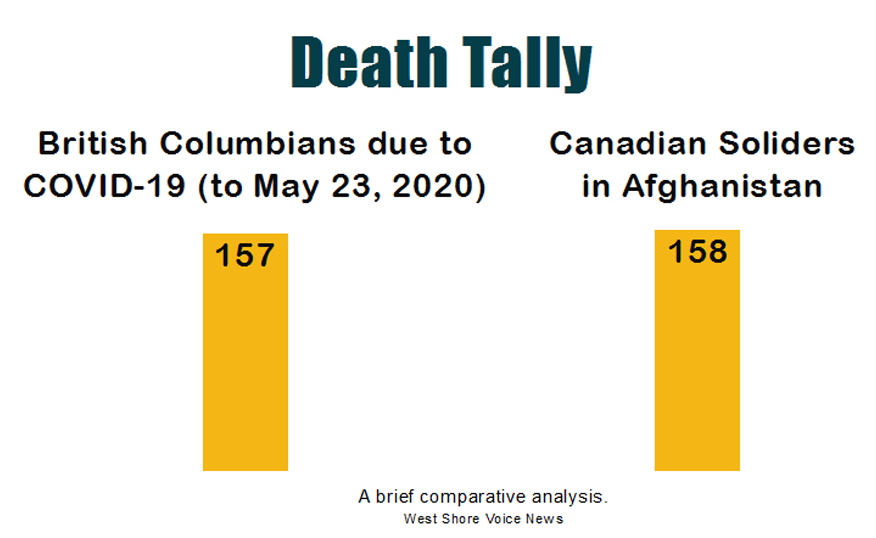
- We should want to keep in context that as restrictions on movement in our communities eases up a bit, BC has had 2,517 confirmed cases of the COVID-19 viral infection (and many more left undetected due to a selective testing strategy). That’s 10 new cases just in the last 24 hours. Of the total cases, 303 people are currently sick with the disease (39 in hospital, and of those eight are in intensive care). About 82% of people who’ve had a COVID-19 infection (2,057 people) have fully recovered.
- There are still 14 long-term care homes and facilities in BC with active outbreaks of COVID-19 (and no policy or effort to remove people from these incubation traps).
- Children are not immune to this disease, in fact it causes severe illness “even in young people”, said Dr Henry in her media briefing today. In total (as of May 22), 73 children and teens under the age of 19 in BC have actively experienced the disease (26 up to age 10, and 47 in the age 10 to 19 year old group).
- And it needs to be clearly seen that 157 people have died from COVID-19 in BC. That’s 157 more people than would have ‘normally’ died in BC in any given three-month period (i.e. from things such as natural causes, illness, motor vehicle accidents, other types of accidents, drug overdoses, and violence). The BC death count is now the same as the number of Canadian soldiers (158) who died serving in Afghanistan, over which Canada makes a big deal. If that degree of death had happened on your street or in your neighbourhood it sure would seem like war. Diluted over the province of BC it seems like a small number, especially compared to death counts in other provinces where COVID-19 has ravaged the population (e.g. 3,865 deaths in Quebec and 2,113 in Ontario as at May 22) occurring mostly in long-term care homes, as is the case in BC.
Public health is doing their due diligence to inform us of the tallies, but the daily release and endless repetition of case-counts and other COVID-19 infection, outbreak and death statistics in BC does lend to the danger of desensitizing the public as to the meaning of those numbers. We choose to keep living our lives, with risk.
Living with COVID-19 risk as we move forward:

Life comes with risks. That is perhaps one of the most stark of the many lessons of the COVID-19 pandemic so far, a way of bringing us back to reality.
The pre-COVID normal that most people under the age of 60 have enjoyed relatively free of any direct contact with disease, poverty or war is sadly now an anomalous modern bubble now shattered. Big dreams of grand wealth, leisure and opulence — the primary goal of capitalist society — has been brandished somewhat, and we see it comes at a cost.
In that context, the ‘new normal’ that we are already moving into is — in terms of risk — closer to the normal that most of humanity has known for as long as there have been human tribes and civilization on earth. Except for the physical distancing part, however. That’s new.
How our bodies know the truth:

Case in point… our human bodies still react to stress with the ‘fight or flight’ response, as has been the case for millions of years. Only in the last 75 years or so (since the end of World War II) have people in developed countries not had actual reason to respond to instant terror (unless of course you live in poverty or violence).
That’s why we have seen the proliferation of risk-taking behaviours in modern society — like driving too fast (and/or drunk), taking mind-altering drugs for the purpose of recreation, or scaring ourselves with images of violence, gore and horror (whether its war, crime and violence on the news or treachery, violence or zombies and demons in creative films/TV).
All of these lifestyle choices or engagements lead to voluntary danger, illness or death — whether by falling off a mountain, melting your brain cells, or jigging your adrenal glands into long-term overdrive — the result is the same (whether instantly, over a short time, or over years of ill health). Addictive gambling is another reflection of that — leading to the death of personal stability (including finances, health and relationships). All of this optional personal damage is also costly to society, which is not to be minimized as we all end up paying a price.
COVID-19 is maturing us:
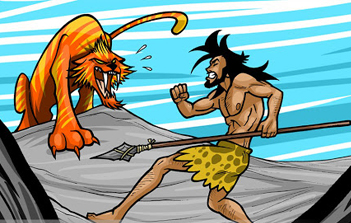
Perhaps one of the unexpected positive outcomes of the terrible COVID-19 pandemic is that most people and developed societies will mature (i.e. take responsibility for consequences). What a price we are paying for this growth which is arguably overdue.
Our minds and bodies know what it is like to be ‘normal’, which includes response to risk. Our minds and bodies naturally seek to experience the danger-response. Easy lifestyles and the advance of public health have done us much good, but they also bring the underbelly of those oddities and pitfalls of human lifestyle that have emerged because for the most part things have been easy.
Oddly, this reacquaintance with natural risk in 2020 has righted the ship to more sensibility and primal normalcy.
The changes that come:
Despite the world’s many problems, one could say that the pre-COVID normal of the last 75 years was a form of heaven on earth. We could be close and intimate with extended families and groups of friends. We could blend freely in our communities on a daily basis without any thought to the contrary, something upon which huge economic and social sectors have been built (like professional sports, the live concert circuit, and international travel).
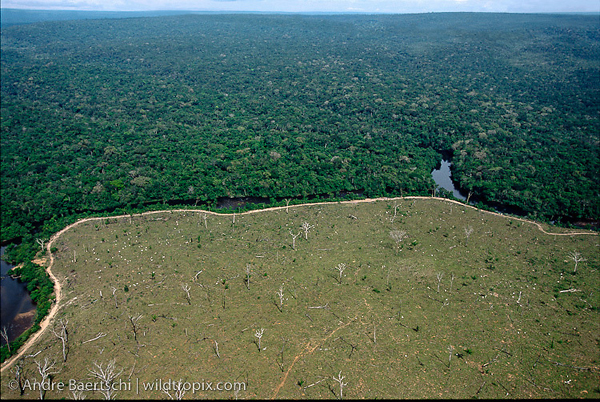
International travel at a whim has been available for decades, supported by previously unseen levels of wealth among the middle class but contributing as well to polluting the earth with fuel emissions. We could seemingly afford to turn a blind eye to gutting the earth for minerals in order to have new technologies, or the decimation of natural forests so we could reliably head to fast food restaurants for a burger or to a coffee shop for a latte. We still want to do these things, but now we better understand the cost.
All of these things have pushed the boundaries of living in organized communities since the industrial revolution (followed by the information revolution, then the high-tech revolution, and now the privacy-robbing data-driven wireless revolution). Thanks to the brakes slammed on by the microscopic COVID-19 virus, the costs of rapid unfettered growth are glaringly obvious and dire: a health emergency, an economic emergency, a planet Earth emergency.
What comes after the shock:

Moving forward as individuals, societies and economics is now an opportunity that can be done well, or not.
We have examples to observe: developed and allied countries came out of the World War I / Spanish Flu combo (1918-1919), the Great Depression (August 1929 to March 1933) and World War II (September 1, 1939 to September 2, 1945) with a ‘roar’. Economies were rebuilt based largely on new social and political frameworks.
The reactionary nature of those rebounds saw a natural human need for rebalancing after being suppressed. After the huge death toll of the Spanish Flu we saw the ‘roaring 20s’ with large sweeps of immigration (including here to Canada) and a rapid expansion of social constructs (in terms of sexuality, recreational use of drugs, introduction of jazz music into mainstream culture, and unfettered entrepreneurialism).
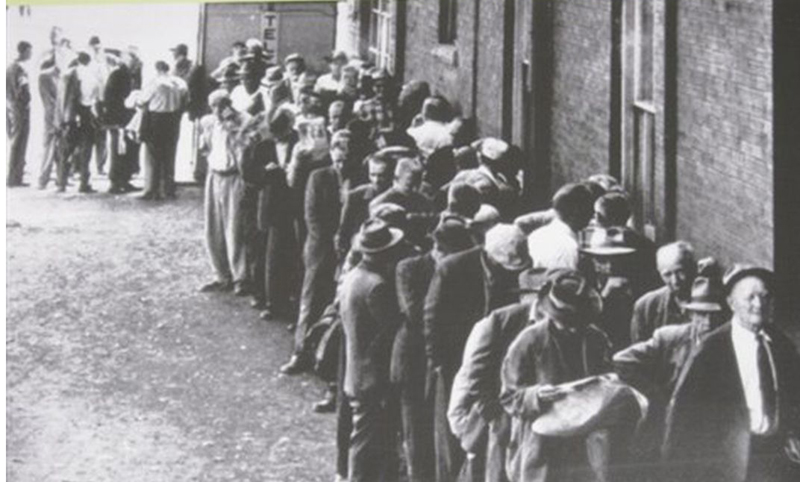
After the crushing personal and social impacts of the Great Depression (in Canada the economy reached bottom in 1932 with a 34.8% decline in per capita GDP) we saw modern countries develop social safety nets such as universal health care in Canada and unemployment insurance.
After the horrors of World War II we saw the wartime technological and organizational structures bleed over into an organized economic boom which produced a numerically large generation (the Boomers) which has known abundance like no other before, and to keep that going the middle class was born.
After World War II on the global scale the United Nations was eventually created in the mid-1960s. Countries that were war Allies evolved into what we know today as the G-7 (countries that generally share common goals, and more tightly with the Five Eyes who share intelligence) and more broadly the G-20 countries which are the leading developed nations. There are opportunities now for Canada to take leadership on the global stage — not for power or dominance, but to help heal this world and see those values embedded into the policies and institutions that will lead us forward post-COVID.
Individuals, communities and politics head into the second wave:
In the moment, as individuals we are dealing with our health on a daily basis in our homes and communities, and the financial impacts of self-isolation and physical distancing. Communities are struggling to find meaning and identity without events and gatherings to make it so, despite the convenience of wireless and virtual technologies. And in this moment as a province and country, BC and Canada are dealing with supporting people and economies with short-term financial measures, but the impact of debt will come for taxpayers and who they vote for.
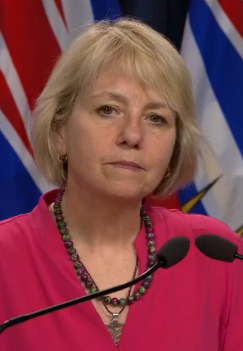
Despite that a second wave of COVID-19 infection is coming (by all public health and scientific measures to be held true), it is already time to restructure and refashion our individual lives, families, communities and economies with a type of insight, sensibility and stability that might not seem jazzy. But how much more of a scare do we need, to keep from repeating the less healthy, sensible or productive aspects of society and economies?
The reality for the second wave is this, as Dr Henry put it today: “We can’t just go back to all together.” She was referencing to gyms, stores and office spaces, but it applies across the board. The second wave will impact us in some ways more than the first hit… it will sink in how much the way we live has changed, and it’s not going back to what it was before.
What’s our vision for the new normal?
In the new normal will we be kinder and more respectful to others (after recently seeing so many examples of helpfulness to others)? Will we set in motion ways to eliminate poverty with a little bit of wealth-sharing (now that we’ve seen the salve that a small emergency benefit payment can provide, to stave off the worst of personal despair and social rebellion)? Will we revise our political systems and expectations of politicians toward achieving better results for everyone (having now witnessed unprecedented cooperation, collaboration and true social achievement in a few short months)?
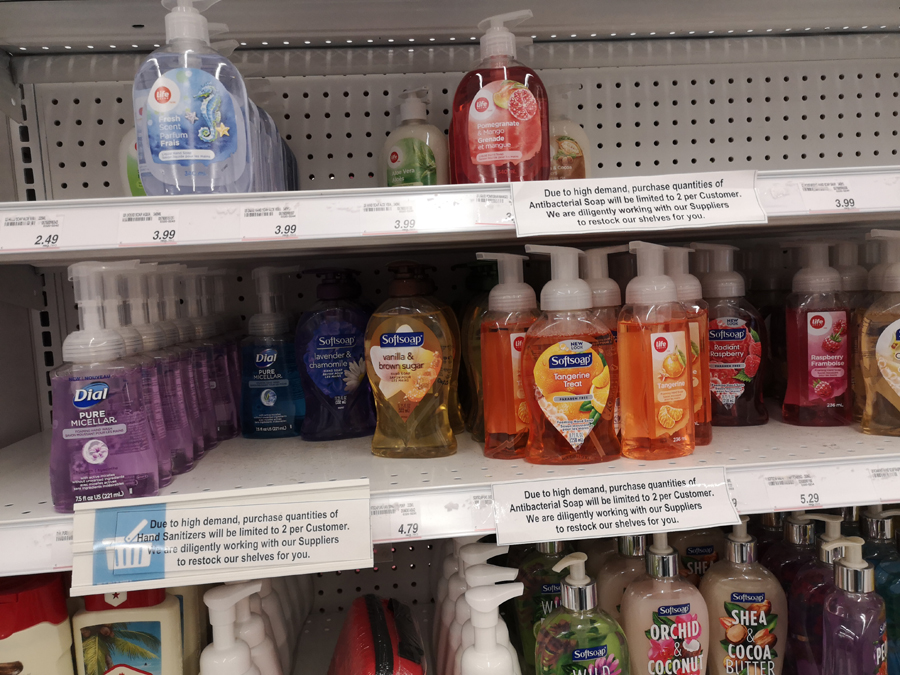
Let’s hope the greatest legacy of COVID-19 will be our ability to intelligently and compassionately respond to this true scare that that brought us back to our senses. Collectively we’ve had a socioeconomic kick in the ass. It could lead to smarter and better outcomes for everyone in BC and Canada, if we choose that as our individual path and our collective goal. Heck, dealing with COVID-19 has even taught us how to wash our hands like we should have been doing all along.
If no one is to be left behind, here’s our chance to build that boat amidst this tumultuous storm. As we sail through and beyond the storm, bit by bit, to a fresh new horizon supported by a COVID-19 vaccine or set of treatments, let’s find some measure of sunshine for all, not just the favoured few. Harm to others is harm to ourselves. Philosophers and spiritual teachings have been telling us that for centuries. Now we’ve seen it in action. Let’s not lose our grasp on these opportunities for better health, prosperity and peace for all.
===== About the writer:
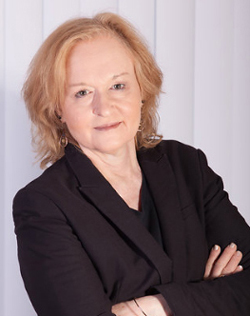
West Shore Voice News editor and publisher Mary Brooke, B.Sc., Cert PR covers a wide range of socioeconomic subject matter through the many thousands of articles and powerful editorials she has written since 2008 within her stable of news publications on the west coast of south Vancouver Island (magazine, then daily newspaper, and now this online daily news portal), and her other writing and publishing ventures going back decades. Mary has lived in a handful of Canadian cities, undertaken many a career track, raised a family of four now-grown children, and with insight has explored the minds and hearts of many. Ms Brooke is a strong advocate for science, lifelong education, gender equality, better preventive health measures, the importance of creativity, and economic resilience for all.


